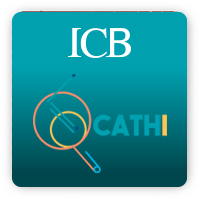Anion-assisted self-assembly of chlorodiorganotin(IV) dithiocarbamate derived from naphthylimide
Two new chlorodiorganotin(IV) dithiocarbamate complexes with general formula {(R2SnCl)dtc}(dtc = R1R2NCS2 , R1 = Bn, R2 = naphtylimide; 3, R = n-Bu; 4, R = Ph) have been prepared from sodium N-[2-(benzylamino)ethyl]naphthalene-1,8-dicarboximide dithiocarbamate 2. The bis-dithiocarbamete 3d (R2Sn(d...
Saved in:
| Main Author: | |
|---|---|
| Other Authors: | , , , , , |
| Format: | Artículo |
| Language: | English |
| Published: |
2018
|
| Subjects: | |
| Online Access: | https://doi.org/10.1016/j.poly.2018.02.020 https://www.sciencedirect.com/science/article/pii/S0277538718300949?via%3Dihub |
| Tags: |
Add Tag
No Tags, Be the first to tag this record!
|
| Summary: | Two new chlorodiorganotin(IV) dithiocarbamate complexes with general formula {(R2SnCl)dtc}(dtc = R1R2NCS2
, R1 = Bn, R2 = naphtylimide; 3, R = n-Bu; 4, R = Ph) have been prepared from sodium N-[2-(benzylamino)ethyl]naphthalene-1,8-dicarboximide dithiocarbamate 2. The bis-dithiocarbamete 3d (R2Sn(dtc)2, R=n-Bu) was obtained as the thermodynamic product during the titration process (vide infra). All compounds were characterized by mass spectrometry, IR, 1H and 13C NMR spectroscopy. The chlorodiorganotin(IV) dithiocarbamate complexes 3–4 also were characterized by 119Sn NMR spectroscopy
and single crystal X-ray diffraction analysis. The crystallographic study of these complexes showed the existence of CAH. . .p, S. . .p and p. . .p intramolecular interactions, indicating that the naphthylimide aromatic fragment stabilized the complexes. Complexes 3 and 4 were studied as host for anions (CH3CO2-, F-, H2PO4-) in CDCl3 by UV–Vis and 119Sn NMR spectrometric titrations. The tested anions cause the displacement of the chloride ligand of the metallic centre. The excess of F- or H2PO4- induce the self-assembly of diorganotin(IV) dithiocarbamate to bis-dithiocarbamates R2Sn(dtc)2 (3d) instead of the breaking of the SASn covalent bond. Quantum mechanical calculations at DFT level (B3LYP/def2-TZVP) were performed to obtain the thermodynamic parameters of the reactions involved in the anion addition to the complexes. |
|---|
